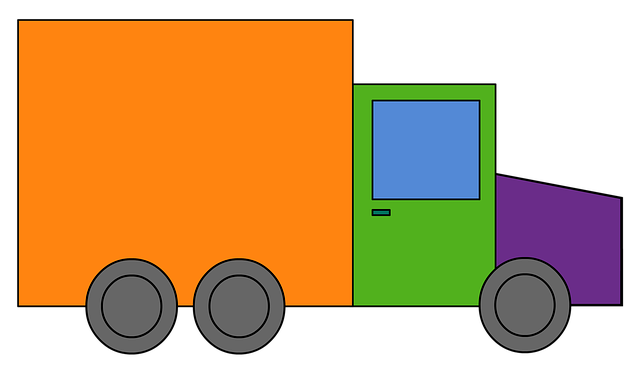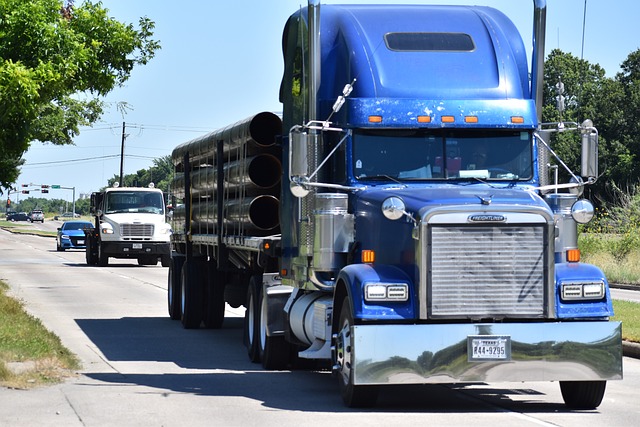Registering a car in California is a straightforward process, but understanding the requirements can save you time and hassle. This comprehensive guide walks you through every step, from gathering essential documents to interacting with the DMV and VIN verifier. We’ll break down the process into simple, actionable steps to ensure a smooth experience. By following this guide, you’ll be ready to hit the road in no time while adhering to California’s car registration regulations.
- Understanding the California Car Registration Process
- Gather Necessary Documents for Registration
- The Role of DMV and VIN Verifier in Car Registration
- Steps to Register a Car in California: A Comprehensive Guide
- Post-Registration: Important Considerations and Tips
Understanding the California Car Registration Process

In California, registering a car involves several steps that are designed to ensure vehicle safety and compliance with state regulations. The process begins with gathering essential documents and information, such as proof of ownership, insurance, and identification. Once these are in order, the next step is to visit a DMV (Department of Motor Vehicles) office or utilize their online services for registration. A key component of this process is the verification of the vehicle’s Vehicle Identification Number (VIN). The California DMV employs advanced VIN verifiers to cross-check the information against national databases, ensuring the car’s history and authenticity.
Using a mobile VIN verifier can also be an efficient alternative, allowing you to conduct a VIN inspection from the convenience of your own home or garage. This modern approach streamlines the registration process, making it more accessible for California residents. By combining traditional DMV procedures with innovative tools like mobile VIN verification, car registration becomes a straightforward and timely task, ensuring peace of mind for all vehicle owners.
Gather Necessary Documents for Registration

Before registering your car in California, you’ll need to gather several essential documents and ensure that your vehicle meets all legal requirements. The first step is to obtain a Vehicle Identification Number (VIN) verifier from the Department of Motor Vehicles (DMV). This can be done through their official website or by visiting a local DMV office. A VIN verifier plays a crucial role in the registration process, as it helps verify the authenticity and history of your vehicle.
Additionally, you’ll require proof of insurance, a valid driver’s license, and the necessary forms for registration. If you’re opting for a mobile vin verification service or conducting a mobile vin inspection, ensure that all documentation is readily available on your smartphone or tablet to streamline the process. This approach can save time and make it easier to complete the registration at any California DMV location.
The Role of DMV and VIN Verifier in Car Registration

In California, both the Department of Motor Vehicles (DMV) and a VIN Verifier play crucial roles in the car registration process. The DMV is responsible for overseeing vehicle registration, issuing license plates, and ensuring compliance with state regulations. It acts as the central authority, collecting necessary documents and fees from vehicle owners. On the other hand, a VIN Verifier, often accessed through mobile vin verification services or even a vin inspection conducted by specialized companies, is an essential component in confirming the authenticity of a vehicle’s unique Vehicle Identification Number (VIN). This step ensures that the car meets all legal standards before it can be registered and licensed.
The use of mobile vin verification or a vin inspection helps streamline the registration process by providing instant data validation. This includes checking the vehicle’s history, ensuring there are no outstanding issues or recalls, and verifying that the VIN matches the actual car. Such measures foster transparency and prevent fraud, ultimately contributing to a safer and more secure registration process for California residents.
Steps to Register a Car in California: A Comprehensive Guide

Registering a car in California involves several steps, but with proper preparation, the process can be straightforward. Begin by gathering all necessary documents including your vehicle’s registration from the previous state, proof of insurance, and valid driver’s license. Next, visit the California Department of Motor Vehicles (DMV) website to ensure you meet all requirements and understand any additional fees associated with registering your vehicle.
One crucial step is to obtain a Vehicle Identification Number (VIN) verification report using an approved DMV VIN verifier. This ensures the vehicle’s history is clear and aids in preventing fraud. You can either visit a DMV field office for a mobile VIN inspection or utilize an online service for a convenient, at-home vin inspection. Once all documents are in order and the VIN is verified, submit your application at a local DMV office, pay the required fees, and schedule a vehicle inspection if needed. This comprehensive guide will walk you through every step to ensure a smooth car registration process in California.
Post-Registration: Important Considerations and Tips

After successfully registering your car in California, there are several important considerations and tips to keep in mind. One crucial step is to ensure that the Vehicle Identification Number (VIN) on your vehicle matches the one listed on the registration documents. You can verify this using a DMV VIN verifier or even a mobile vin verifier/inspection tool for added convenience.
Additionally, keep your registration papers up-to-date and stored in a secure place. Regularly check for any updates or changes in California’s registration requirements. If you ever need to transfer ownership or sell your vehicle, having accurate and current documentation will streamline the process. Consider using a mobile vin verification service for quick and easy checks, ensuring compliance with state regulations at all times.
